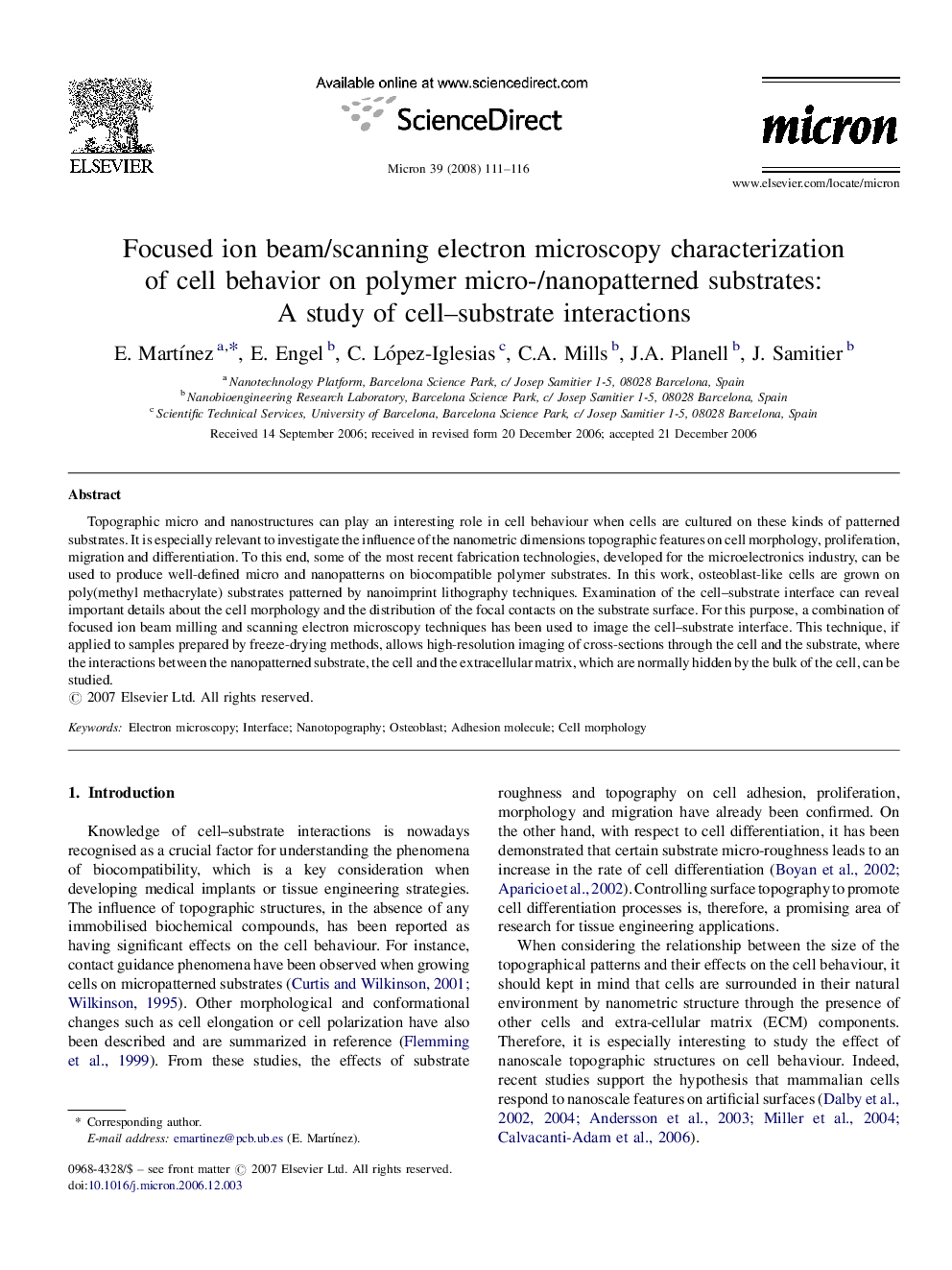| Article ID | Journal | Published Year | Pages | File Type |
|---|---|---|---|---|
| 1589917 | Micron | 2008 | 6 Pages |
Topographic micro and nanostructures can play an interesting role in cell behaviour when cells are cultured on these kinds of patterned substrates. It is especially relevant to investigate the influence of the nanometric dimensions topographic features on cell morphology, proliferation, migration and differentiation. To this end, some of the most recent fabrication technologies, developed for the microelectronics industry, can be used to produce well-defined micro and nanopatterns on biocompatible polymer substrates. In this work, osteoblast-like cells are grown on poly(methyl methacrylate) substrates patterned by nanoimprint lithography techniques. Examination of the cell–substrate interface can reveal important details about the cell morphology and the distribution of the focal contacts on the substrate surface. For this purpose, a combination of focused ion beam milling and scanning electron microscopy techniques has been used to image the cell–substrate interface. This technique, if applied to samples prepared by freeze-drying methods, allows high-resolution imaging of cross-sections through the cell and the substrate, where the interactions between the nanopatterned substrate, the cell and the extracellular matrix, which are normally hidden by the bulk of the cell, can be studied.
